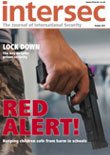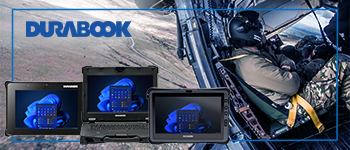Shifting plates
How more ambitious deployments of ANPR with integrated solutions, better cameras and more powerful software are unlocking benefits to law enforcement
ANPR is proving to be a significant enabler in applications from global logistics and highways management to law enforcement, with improved capability unlocking new uses and applications. In the UK West Midlands region, a network of 200-plus cameras supporting specialist ANPR image analysis software has been deployed to improve traffic management and contribute to economic growth. The solution enables detailed analysis of traffic flows, helping to minimise congestion, reduce journey times and improve safety. In highways applications detecting criminality is a priority for ANPR, and something that it’s proving increasingly capable of delivering.
In the Transport for West Midlands project, systems integrator Total Integrated Solutions provided a solution combining specialist IDIS 3MP DC-B3303X cameras with self-configuring adaptive appearance modelling software from developer 4Sight Imaging.
The new tech combination is significant because it delivers a higher-level performance than has previously been expected, with each camera capable of covering up to four lanes of bi-directional traffic with no lane overlap. That has been impressing public agencies around the world, according to Martin Cowley, Strategic and Key Accounts Manager at 4Sight Imaging. Independent comparative testing has shown the solution to be ten times more accurate than conventional systems, with the light handling performance of the cameras boosted by the specialist software compensating for more challenging variations in light levels.
The technology was chosen not just because of its accuracy, but also cost advantages – the existing infrastructure was leveraged to mount the cameras, reducing the expense and disruption of civil works. Plug-and-play cameras and simple configuration ensured a fast deployment. Delivering reliable image capture even with vehicles travelling above 70 miles per hour, the 3-megapixel cameras are a lower cost choice compared with alternative UHD solutions. The existing computing infrastructure at the Birmingham monitoring centre was seamlessly integrated, and with an eye to future development of the system, open architecture builds in futureproofing and scalability.
Now, with more than half of the network fully operational, around 3-million data points are being generated daily, allowing real-time analysis of traffic flows, resulting in faster response to emergencies, obstructions and congestion build-up. With an accurate real-time overview across 11 key routes, traffic management teams can intervene rapidly if an incident occurs, to keep roads clear and reduce disruption to businesses and individuals.
“The ability to use a single camera to cover up to four lanes of bi-directional traffic and still maintain accurate reading was important to us as it allows us to utilise existing street furniture, simplifies maintenance and reduces cost,” says Reiss Spear, Sales Manager at IDIS Europe.
Martin Cowley says many of the projects being won in partnership with IDIS are being driven by the higher-level data capture being achieved today: “The accuracy of the ANPR read, the versatility of the system and reliability are only achievable if we can do a very tight integration with the camera.” Typically, he says, an ANPR camera will decide what picture to send to the software, and the software has to deal with it.
“We do it the other way around. We take control of the camera and force it to stay in the sweet spot. All companies will say we work close to 100 percent regarding accuracy, but in reality, its been somewhere between 90-95 percent with most ANPR systems.” However, the best solutions now are realistically averaging 98 percent and above.
An accuracy difference of 1 percent will translate to significant losses in car parking management applications, Martin Cowley points out. In the UK, for example, the two biggest car park operators control around 5,000 parking sites with around 3.5-million licence plates being read every day; a small difference in accuracy will result in a significant number of misreads.
In law enforcement, greater ANPR accuracy is also being combined with other systems to deliver new levels of intelligence to help combat crime. For example, ANPR cameras which allow for vehicle checks against law enforcement databases to identify potential threats. Systems are also now being targeted to detect and trigger an alert when a vehicle’s license plate has been deliberately obscured or removed. Using ANPR to detect such infringements of the motoring laws – the use of false license plates, or vehicles without tax or insurance for example – is proving to be a key to uncovering much more serious criminality.
Looking ahead, efforts are also being made to achieve reliable facial-recognition through vehicle windscreens. When linked to ANPR, this could deliver major new capabilities and prove to be a game changer in a number of applications, including prevention and investigation of serious criminality, terrorism and gang-related activity.
In the logistics sector greater use of ANPR is partly being driven by competition – there is huge pressure on operators to increase security, strip-out costs and improve efficiency – and it’s being given further impetus by the changing nature of risks. Unprecedented disruption to international supply chains over the last 18 months has focused attention on the critical role that logistics play, and on the wide-ranging potential risks that transport operations face.
Warehouses, transit hubs and vehicles have always been an attractive target for criminals, from low level opportunist theft and petty crime, insider threats including inventory and cargo shrinkage and fraud, through to organised crime robberies and steal-to-order gangs. But over the last two years challenges have been coming from many new directions and the threats that are not just potential, but real and present, has grown: the pandemic and ensuing shortages (from raw materials to qualified drivers), cross-border disruption, destabilising international conflict, migration, extreme weather and economic stress are all underlining need for adaptability.
Not surprisingly, this is a highly standards-driven sector with TAPA (the Transported Asset Protection Association) a leading influencer through its work in risk monitoring and security standards accreditation among over 700 member companies. TAPA’s FSR (Facility Security Requirements) were developed as common global minimum standards for secure warehousing and in-transit storage, while separate Trucking Security Requirements cover transportation by road. Successful implementation of the TAPA standards depends on collaboration between logistics services providers, buyers and auditors, and robust oversight systems to manage people at every stage.
According to the software house Quanika these push factors – greater risks, standards, competition – are boosting demand for ANPR technology that integrates security infrastructure, people management and sector-specific systems for streamlining operations.
“We’re working closely with logistics operators to develop new, single-platform solutions that are much more efficient than standalone, siloed systems,” says Sales Director Phil Campbell. “They are making much better use of ANPR and the ability to identify vehicles automatically is unlocking important benefits.”
With excess charges payable when drivers are kept waiting – £50/hour is a realistic current estimate – costs can quickly build up. So, it’s vital that claims can be verified and persistent inefficiencies tackled.
Integrating ANPR gives warehouse operators a minute-by-minute audit trail of delivery activity, confirming when a vehicle enters the facility and how long it has stayed.
Phil Campbell cites a project developed for JAS Worldwide, a global leader in logistics, customs brokerage, air freight and sea freight. At the company’s Civil Aviation Authority (CAA) and Authorised Economic Operator (AEO) approved bonded warehouse close to Heathrow Cargo Village, 12 loading doors are in operation 24/7. High-value goods are often stored on site before being shipped onwards, so senior logistics managers wanted to strengthen security with upgraded access control and automated visitor management leveraging integration with the latest ANPR technology.
Quanika worked with systems integrator NK Tech Line, tailoring a solution around its access control and visitor management software, integrating with video management software and Microsoft’s Active Directory and Outlook. The solution leverages Axis Communications latest ANPR cameras, network door controllers, video intercoms, audio devices and QR code readers. NK Tech Line also constructed a new traffic island to combine new barriers, the ANPR cameras, two-way video intercoms and readers to provide secure yet frictionless entry using mobile credentials.
Helping logistics suppliers go further, Quanika is now developing practical digitisation solutions for loading bays, with automated recording of driver check-in to replace manual tasks that can be prone to error and close a loophole that is often exploited. Adding in facial-recognition capability will automate the matching of vehicles with drivers, making it harder for criminal gangs to infiltrate operations.
JAS is now looking at further digitisation to replacing labour-intensive paper systems. And having proved its value at the Heathrow warehouse, the Quanika technology will now be further embedded at more JAS Worldwide sites.
“Automation and digitisation are increasingly essential in the logistics sector and Quanika and Axis have provided a powerful platform to let us make immediate gains – in terms of operational efficiency, loss prevention and customer satisfaction – that gives us future adaptability too,” says Steve Headland, UK Logistics Director, JAS Worldwide.









